Disco DJ
The Disco DJ: By Cornelia Stokes and Alanna Brown. The Disco DJ consisted of heterosexual African Americans, and some women. Many of them were musicians,
To begin my research, I conducted an internet search for all articles, books, and documentaries that contained information on Nina Simone. There are multiple books published on the life of Nina Simone, however to get accurate details I crossed referenced each source with another. Only utilising verified data in my paper. Along with articles and books I was able to find a documentary with interviews of Nina Simone describing her life and her music. Seeing her conveyed the pain she felt throughout her career but also her deep love of music.
Nina Simone was a talented, free spirited, and passionate individual. Her wide ranging musical style and talents along with her political and social activism is why she is a household name. Despite her original plans to play classical music, Nina Simone became popular for performing a mixture of jazz, blues, folk, and classical music. She used her voice to speak out for her people and dedicated her life to serve others whether it was in political acts or through her music.
Nina Simone was born Eunice Kathleen Waymon on 21 February 1933 in Tryon, North Carolina. She was the sixth of eight children. Nina began her piano career at the age of three, playing in churches and recitals. Nina met Mrs. Muriel Mazzanovich who trained her for 5 years in classical piano. To get to Mrs. Mazzanovich’s house Nina had to actually cross the train tracks that separated the whites from the blacks. In order to achieve her goal of becoming the first national black classical pianist, Nina’s instruction was very regimented in classical music. While under her instruction Mrs. Mazzanovich started The Eunice Kathleen Waymon Fund to further Nina’s education once she had left her tutelage. Nina would practice 7-8 hours a day, which became very lonely. She was isolated from the other children in both the white community and the negro community. Due to the lack of racial discussion within the Waymon household, Nina did not consciously deal with race. It just wasn’t something that was on her mind until years later.
After graduating from Allen High school for Girls in Asheville North Carolina, the money from The Eunice Waymon Fund helped her to Juilliard in New York. A year later and according to plan, she applied for a scholarship to the Curtis Institute of Music in Philadelphia, Pennsylvania. Nina’s family relocated to Philadelphia in the expectation of her admittance to Curtis. After auditioning, Nina was denied admission to Curtis. Nina knew she was good enough but did not realize she was turned down because she was Black. Nina was never fully aware of the significance of racial prejudice until Curtis. Although Nina never reapplied, she continued to take private piano lesson with Vladimir Sokoloff, a professor at Curtis. To pay for private lessons and to help her family out financially, Nina Simone went to work playing the piano. The start of her career was solely for profit (Feldstein). Nina Simone got a job in an Atlantic city bar where she was paid to play any type of music requested. But to keep her job she also had to sing, which she had never done before. She was paid $90 to sing and play most nights. In 1954 Eunice Waymon created the alias Nina Simone so her mother wouldn’t find out she was “playing the devil’s music” in bars. “Nina” meaning little one and “Simone” was taken from the French actress Simone Signoret, whom she had seen in the 1952 movie Casque d’Or. Entertaining became very lonely, working midnight to 7:00 in the morning. Working and playing long hours wasn’t unfamiliar to Nina, she had done it most of her childhood. But it was now a necessity to play in order to help provide an income for her family. It was never really a choice to stay in show business – it was a necessity. This burden continued to grow as time went on.
Nina Simone met Al Schackman, a guitar player, in New Hope Pennsylvania and it was the start of a beautiful musical friendship. He could follow and catch any key that Nina would play. She was always trying to convey an emotional message, no matter how her voice would sound. Nina had a woman’s voice but it had the depth of a baritone. Her sound was original.
In 1958, Nina Simone’s recording of “I Loves You Porgy’, a version of Billie Holiday’s “Porgy”, became her first hit for Bethlehem Records. With Bethlehem Records, she also recorded “My Baby Just Cares for Me”, lately used by Chanel in a perfume commercial in Europe. Nina also performed “I Loves You Porgy” at the Newport Jazz Festival and at the Playboy Mansion. However, after moving to New York City in 1959, she signed with Colpix records and released her debut LP, The Amazing Nina Simone. One critic suggested that she might be “the greatest singer to evolve in the last decade and perhaps the greatest singer today… the greatest compliments could only be understatements of her talent” (Feldstein). Nina Simone was the subject of discussion in publications that crossed racial, political, and cultural divides. As time progressed so did Nina’s professional and personal life. Nina was introduced to Andy Stroud at a nightclub by a mutual friend. Andy explained to Nina that he had been wanting to meet her for a long time, and Nina fell in love. Simone married Stroud in 1961, he knew exactly what he wanted. Andy left the police department to manage Nina’s career. He had a well thought out plan for her career and her overall public persona. Together they bought a house in Mt. Vernon, New York, of which Nina was very proud. Their daughter Lisa Celeste Stroud was born September 12,1962. Nina loved being a mother and she was good at it. However, things started to change due to her career.
In 1963 Nina Simone performed at Carnegie Hall where she had dreamed of playing her entire life. Although it was her dream she was still disappointed because she wasn’t playing what she had trained for all those years, classical music. After Carnegie Hall Nina Simone was getting airplay all over the country and around the world. She was officially making name for herself. She brought the discipline she learned in classical music into the free-spirited jazz world. She was most satisfied with her music when she used everything she learned about classical music. Nina began to want everything success and money could buy. Stroud promised her that “she was going to be a rich black bitch” (Garbus). Andy Stroud worked Nina to the bone. He always had something planned for her or traveling to do a show, which caused her to be away from her child and she resented that. Nina would sometimes get angry behind the scenes and even on stage during her performances. She would get into moods of depression about personal and professional aspects of her life. Because of the rapid lifestyle, Nina was always tired but she could never get enough sleep because Andy always had her working. Nina grew to resent Andy but was also afraid of him. He would beat her and make her do whatever he pleased.
Throughout the 1960’s during the Civil Rights Movement Nina used her voice to speak out for her people. She supported national civil rights organizations such as SNCC, CORE, and the NAACP, offering her name as a sponsor and performing at numerous benefit concerts. Although she was giving her support she felt compelled to get more involved. She wrote “Mississippi Got Damn” in response to the 12 June 1963 murder of Medgar Evers, and the 15 September 1963 bombing of the 16th Street Baptist Church in Birmingham, Alabama. All performers took significant risks when they supported African American activists. This song caused so much controversy, radio stations and stores refused to play the song. Nina replied: “I choose to reflect the times and the situations in which I find myself”. Nina also performed in Atlanta and for the marchers during the Selma-to-Montgomery march in 1965. She was nothing but angry. The first-time Nina encountered discrimination was when she younger and played in recitals. During the recital, Nina’s Parents were told they would have to sit in the back when Nina performed, but Nina would not play until they were moved back to the front. Although this is form of discrimination was subtle it never left Nina. Nina Simone began to meet artists, writers, poets, and civil rights activists and would collaborate with them.
In 1967, Nina signed with RCA Records where she recorded “Backlash Blues”, which was written by Langston Hughes and “Young, Gifted, and Black” written in the memory of Lorraine Hansberry. She learned a lot from other artists and activists and became extremely close to them. Nina started to play only political songs and people became afraid to book her because they didn’t know what she was going to say. “How can you be an artist and not reflect the times?” she said. The music industry boycotted Nina’s records because they were unhappy with the controversial records of the 1960’s as well as other things she had done. She was penalized for being herself and that eventually hindered her music career.
Nina’s career began to take a toll on her, physically and mentally. She had responsibilities that were unwanted. People continued to depend on her to perform and provide an income. Nobody cared if she was too tired to perform, she had to do it anyway. By the late 1960’s, Nina’s demeanor would change and she would become violent and menacing and the abuse from Andy didn’t help. The marriage began to deteriorate and Nina and Andy began to see other people but would stay together for the sake of the business and the child.
In 1970, Nina left it all behind hoping she would find peace and freedom. No longer putting up with the abuse she left Andy, , left the country, and moved to Liberia. Nina’s disappearance left Andy to deal with Simone’s financial obligations, their Mt. Vernon house, and their daughter Lisa, who was left with next door neighbor Betty Shabazz. Facing personal, legal, and political difficulties, Nina performed and recorded infrequently. In Africa, Nina was happy and free from responsibilities. Nina brought her daughter to live with her in Liberia but she was always traveling. She became mentally and physically abusive to her daughter, so at the age of 14, Lisa moved back to New York and lived with her father, ultimately damaging the relationship with her daughter.
Eventually Nina realized that she wasn’t making any money and would have to return to show business. Nina moved to Switzerland. The first thing she did was the Montreux Jazz Festival in 1976 and she would stop the show if people were interrupting or not paying attention. She went to Paris alone and did everything by herself. Nobody believed that she was in Paris performing at low end clubs because she was just too big of a star. But she was, and was getting $300 dollars a night to do so. Nina connected with friends in Paris to help her because she was wasting away. Nina wasn’t taking care of herself. She was examined by doctors and was diagnosed with manic-depressive and bipolar disorders. The medicine Nina was prescribed would eventually begin to affect her motor skills. But it didn’t matter, she had to continue to perform. Everything was sacrificed for the music.
In the late 1980’s business began to pick back up and Nina performed all over Europe,” My Baby Cares for Me” became a hit, and it was her last chance to be a star. No matter what she was going through, music was the one thing she didn’t have to think about. In 1993, Nina Simone settled in the South of France, and continued to tour around the world. During her career, she received 15 Grammy nominations and the Grammy Hall of Fame award in 2000. On April 21, 2003 Eunice Kathleen Waymon died in her sleep at her home in Bouches-du-Rhone.
In all, Nina Simone led an extraordinary life. She always understood the importance of music, performing was the only way to make people feel on a deeper level. Behind her music, you could see the solitary soul that understood the pain of being misunderstood and mistreated. Nina Simone used her voice to create a legacy of liberation, empowerment, passion, and love through music.
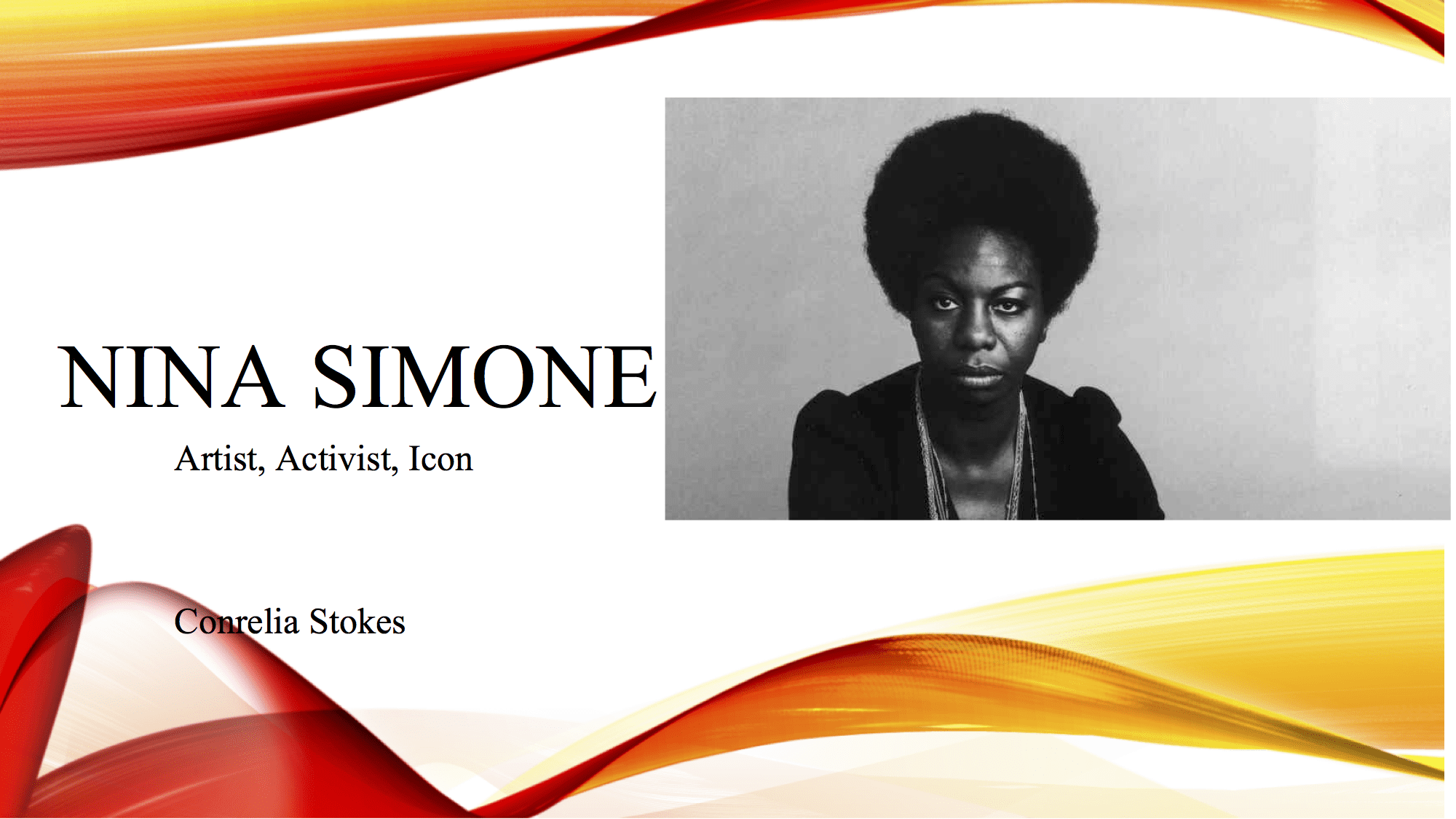




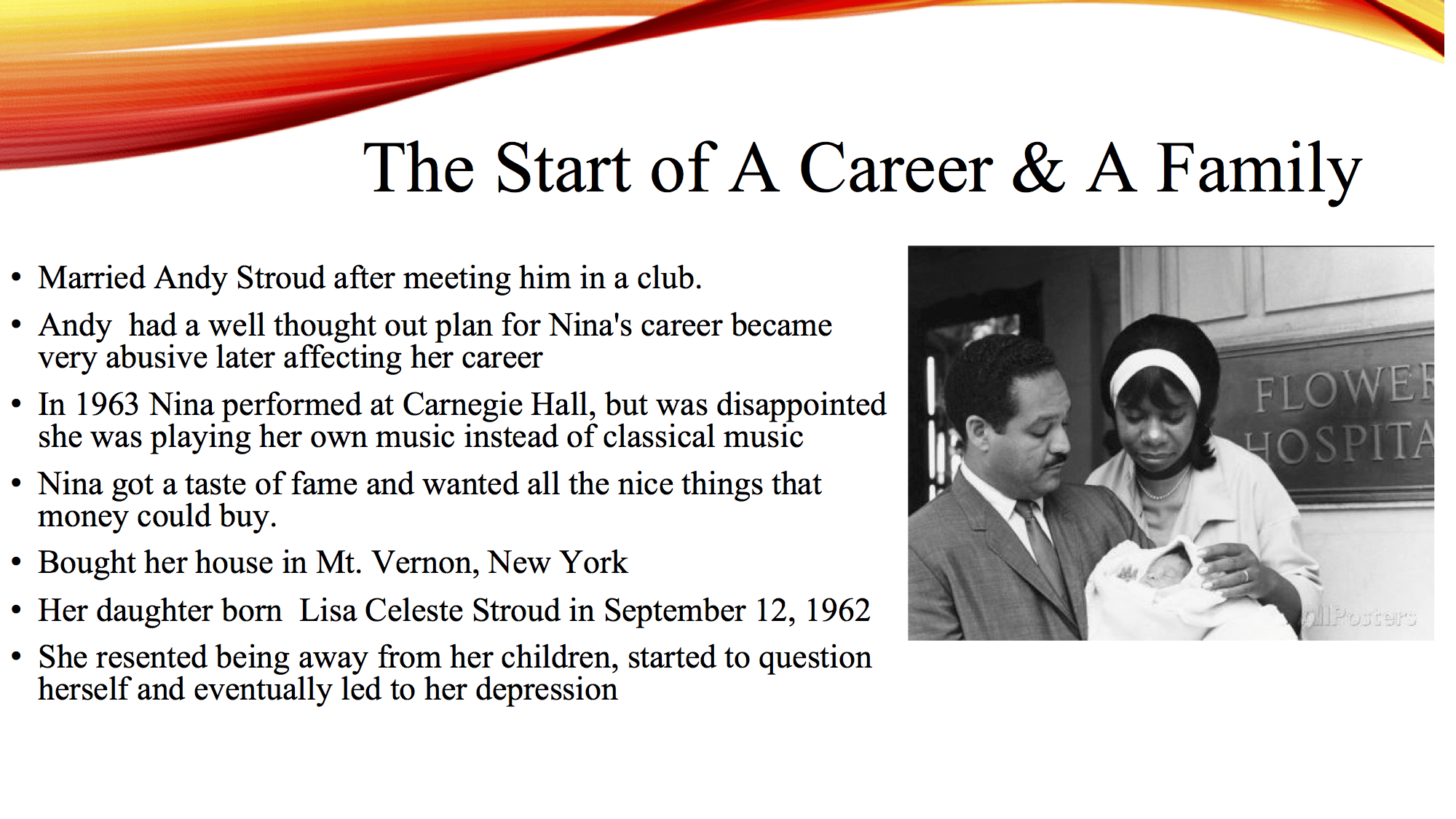
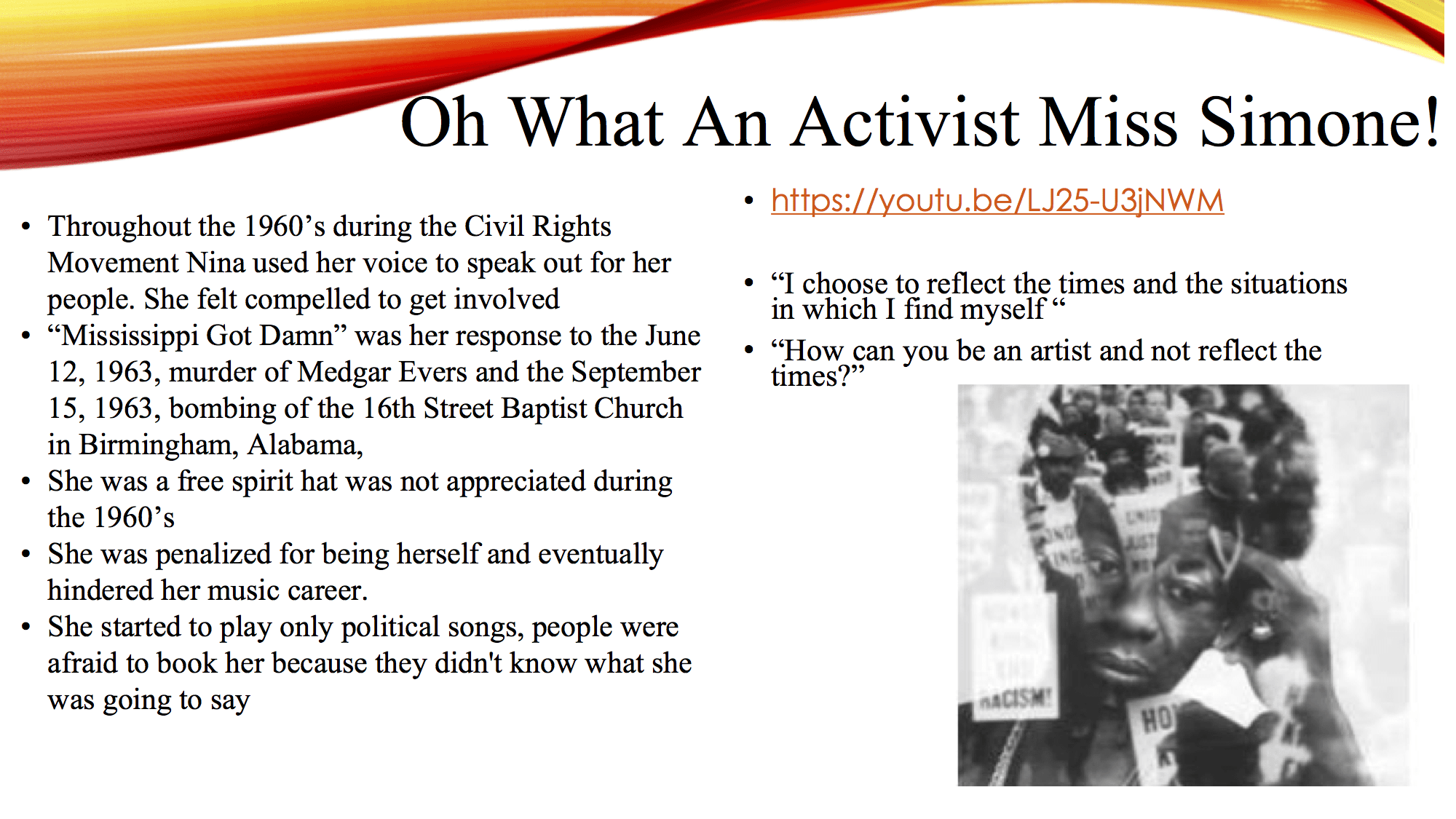
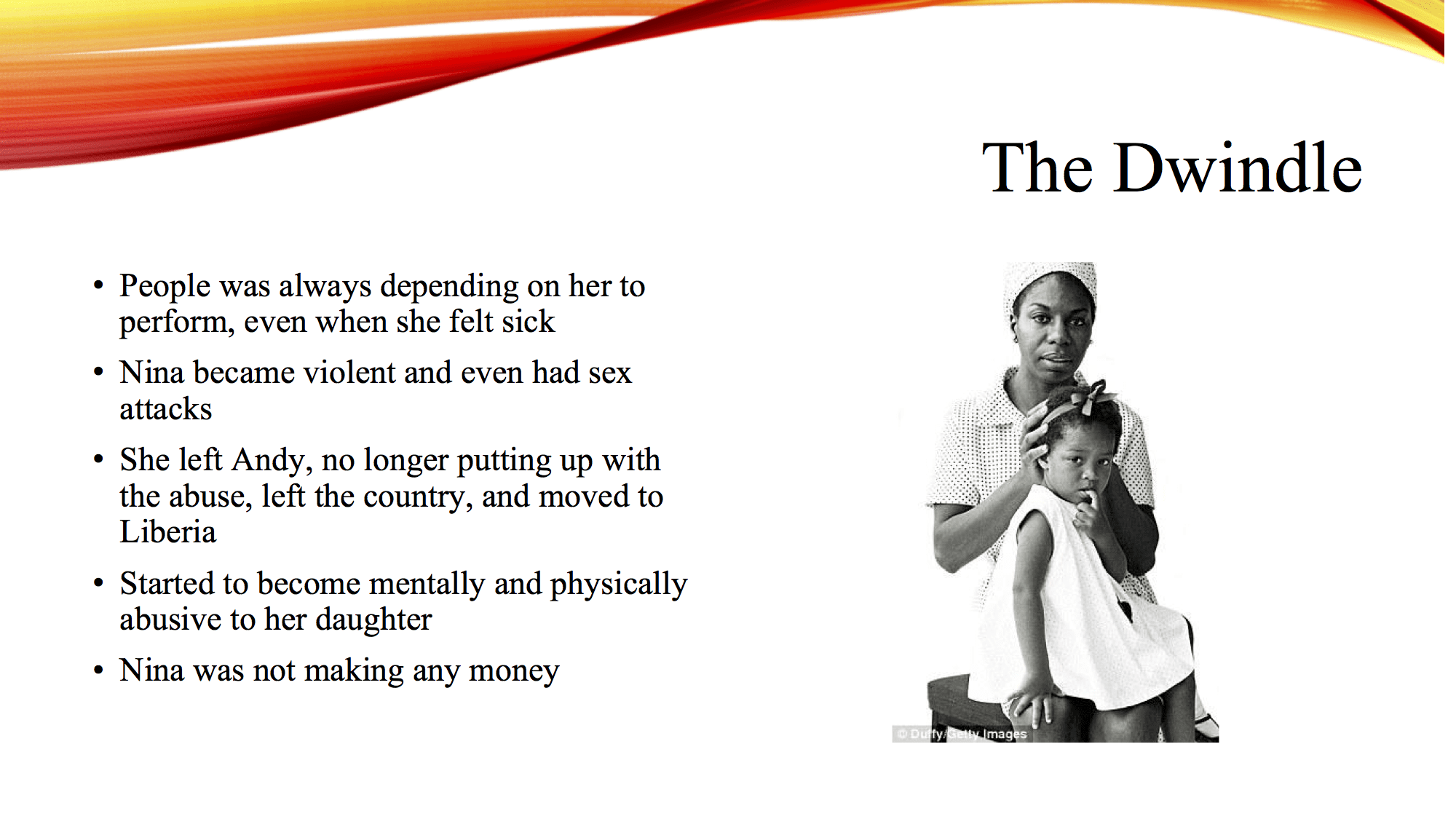


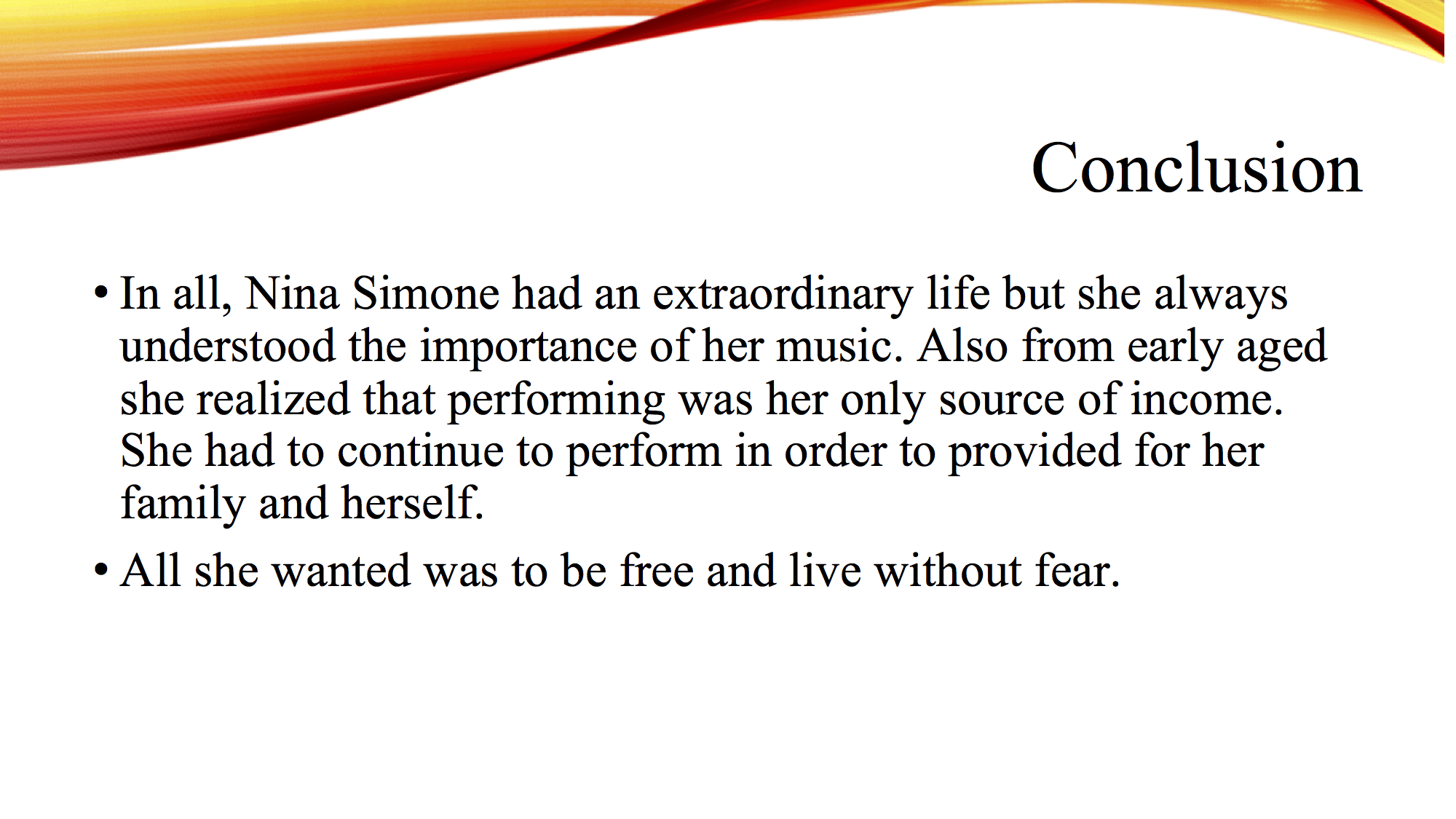
Brière-Haquet, Alice, and Bruno Liance. Nina : Jazz Legend And Civil-Rights Activist Nina Simone. Charlesbridge Publishing, Incorporated, n.d.
Brun-Lambert, David. Nina Simone: The Biography. Aurum Press, 2009.
Cohodas, Nadine. Princess Noire: The Tumultuous Reign Of Nina Simone. University of North Carolina Press, 2002.
Feldstein, Ruth. “”I Don’t Trust You Anymore”: Nina Simone, Culture, And Black Activism In The 1960S”. Journal of American History 91, no. 4 (2005): 1349. Accessed September 24, 2017. http://www.jstor.org/stable/3660176.
Garbus, Liz. What Happened, Miss Simone?. Film. Netflix, 2015.
Hampton, Sylvia, and David Nathan. Nina Simone. London: Sanctuary, 2004.
Shatz, Adam. “The Fierce Courage Of Nina Simone”. The New York Review Of Books. Last modified 2017. Accessed September 26, 2017. http://www.nybooks.com/articles/2016/03/10/fierce-courage-nina-simone/.
Simone, Nina, and Stephen Cleary. I Put A Spell On You: The Autobiography Of Nina Simone.. Cambridge, Mass.: Da Capo Press, 2003.
Simone, Nina. You’re The Voice. Harlow: Faber, 2002.
Tillet, Salamishah. “Nina Simone’S Time Is Now, Again”. Nytimes.Com. Last modified 2017. Accessed September 29, 2017. https://www.nytimes.com/2015/06/21/movies/nina-simones-time-is-now-again.html?mcubz=3.
Little Gil Blue
Nina Simone and Her Friends
The Amazing Nina Simone
Nina Simone ar Town Hall
Nina Simone at Newport
Forbidden Fruit
Nina at the Village Gate
Nina Simone Sings Ellington
Nina’s Choice
Nina Simone in Concert
Broadway-Blues-Ballads
I Put a Spell on You
Sincerely Nina
Pastel Blues
Nina Simone with Strings
Let It All Out
Wild Is the Wind
High Priestess of Soul
Nina Simone Sings the Blues
Silk & Soul
‘Nuff Said!
Saga of the Good Life and Hard Times
Nina Simone and Piano
To Love Somebody
A Very Rare Evening
Gifted and Black
Black Gold
Here Comes the Sun
Emergency Ward
Sings Billie Holiday – Lady Sings the Blues
Live at Berkeley
Gospel According to Nina Simone
It Is Finished
Baltimore
The Rising Sun Collection Let it Be Mw
Fodder on My Wings
Backlash
Nina’s Back
Live & Kickin
Let it Be Ne
Live at Ronnie Scott’s
The Nina Simone Collection
Compact Jazz
Live in Germany, October 23, 1989
A Single Woman
The Disco DJ: By Cornelia Stokes and Alanna Brown. The Disco DJ consisted of heterosexual African Americans, and some women. Many of them were musicians,
Within the African American, music has made a huge difference. Music has been the center of African communities, in every social setting including ceremonies, holidays, family,

Ulysses Kay, in full Ulysses Simpson Kay (born Jan. 7, 1917, Tucson, Ariz., U.S.—died May 20, 1995, Englewood, N.J.), American composer, a prominent representative of

Cleveland Institute of Music Late 1950s-1960s: jazz arranger 1970-1984: University of Connecticut Hale Smith was one of the first African American composers to abandon black

Login to your account